Best Knee Support for Walking 2024: Comprehensive Guide

Walking is a fundamental part of our daily routine, whether it’s for exercise, commuting, or simply getting around. However, for those experiencing knee pain or discomfort, walking can become a challenging and painful activity. This is where knee support comes into play. Knee supports are designed to provide stability, reduce pain, and prevent further injury, making walking more comfortable and less strenuous on the knee joints.
The Importance of Knee Support for Walking
Knee support is crucial for individuals who experience knee pain, suffer from arthritis, or are recovering from an injury. It helps in maintaining proper alignment of the knee joint, distributing weight evenly across the joint, and reducing the strain on the muscles and ligaments. For many, knee supports are not just an accessory but a necessity for maintaining mobility and quality of life.
Who Might Need Knee Support?
Knee supports are beneficial for a wide range of individuals, including:
- Athletes: Those who engage in high-impact sports or activities that put a lot of stress on the knees.
- Elderly Individuals: As we age, our joints become more susceptible to wear and tear, making knee supports essential for maintaining mobility.
- Individuals with Arthritis: Knee support can help manage pain and improve mobility for those with osteoarthritis or rheumatoid arthritis.
- Post-Surgery Patients: Those recovering from knee surgery may need knee support to aid in the healing process and prevent re-injury.
- People with Chronic Knee Pain: Individuals suffering from chronic knee pain due to various conditions, such as patellar tendinitis or bursitis, may find relief with knee support.
Understanding Knee Pain and Its Causes
Knee pain is a common issue that affects people of all ages. It can be caused by a variety of factors, ranging from acute injuries to chronic conditions. Understanding the root cause of knee pain is essential in choosing the right knee support and effectively managing the pain.
Common Causes of Knee Pain
- Injuries: Acute injuries such as ligament tears (e.g., ACL, MCL), meniscus tears, and fractures can cause significant knee pain.
- Arthritis: Osteoarthritis and rheumatoid arthritis are leading causes of chronic knee pain, characterized by inflammation, stiffness, and pain in the joints.
- Tendinitis: Inflammation of the tendons around the knee, often due to overuse, can lead to pain and discomfort.
- Bursitis: Inflammation of the bursae, the small fluid-filled sacs that cushion the knee joint, can result in pain and swelling.
- Patellar Tracking Disorder: This occurs when the kneecap moves out of its proper alignment, causing pain and discomfort.
- Overuse Injuries: Repetitive strain on the knee from activities such as running, jumping, or prolonged walking can lead to overuse injuries like runner’s knee or IT band syndrome.
The Impact of Walking on Knee Joints
Walking is generally a low-impact activity, but for individuals with knee problems, even this mild exercise can cause pain. The repetitive motion of walking can exacerbate existing knee issues by placing continuous stress on the joints. Over time, this can lead to increased pain, swelling, and even further injury if not properly managed. Using knee support can help reduce the strain on the knee joints during walking, allowing for a more comfortable and pain-free experience.
How Knee Support Can Alleviate Pain
Knee supports work by providing compression, stability, and sometimes additional cushioning to the knee joint. This can help reduce pain in several ways:
- Compression: Knee supports often provide compression, which can help reduce swelling and increase blood flow to the affected area, promoting healing and reducing pain.
- Stability: Knee braces and supports stabilize the knee joint, preventing unwanted movements that could exacerbate pain or lead to further injury.
- Alignment: Some knee supports are designed to help maintain proper alignment of the knee joint, reducing strain on the surrounding muscles and ligaments.
Types of Knee Supports
There are several types of knee supports available, each designed to address specific needs and conditions. Understanding the different types can help you choose the best option for your situation.
Hinged Knee Braces
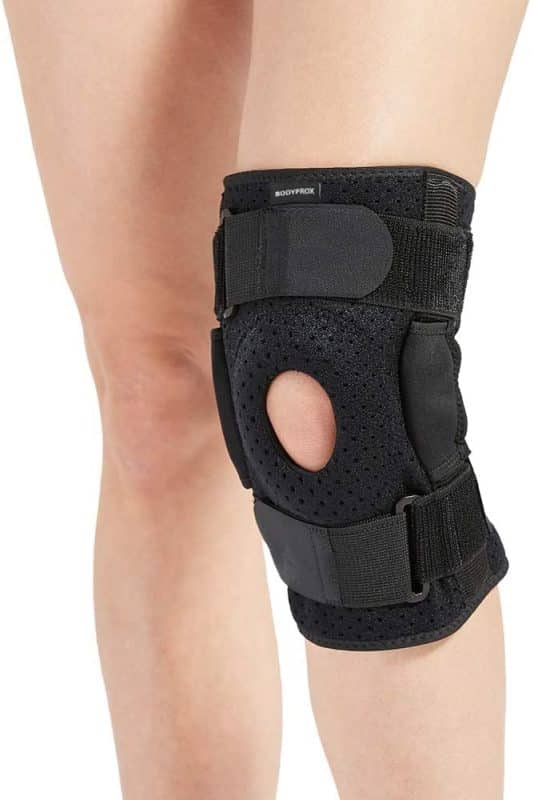
Hinged knee braces are designed to provide maximum support and stability to the knee joint. They are often used by individuals recovering from knee surgery or those with significant ligament injuries. The hinges on either side of the brace allow for controlled movement, preventing hyperextension or excessive lateral movement.
Pros:
- Provides strong support and stability.
- Ideal for post-surgery recovery and serious injuries.
- Controls movement to prevent further injury.
Cons:
- Can be bulky and uncomfortable for daily use.
- May restrict movement more than other types of supports.
Knee Sleeves

Knee sleeves are made from stretchy, elastic materials and provide compression to the knee joint. They are ideal for individuals with mild knee pain or those looking to prevent injuries during activities. Knee sleeves are lightweight and comfortable, making them suitable for all-day wear.
Pros:
- Lightweight and easy to wear.
- Provides mild support and compression.
- Suitable for everyday use and sports activities.
Cons:
- Offers less support than hinged braces.
- May not be sufficient for severe knee injuries.
Wraparound Knee Braces
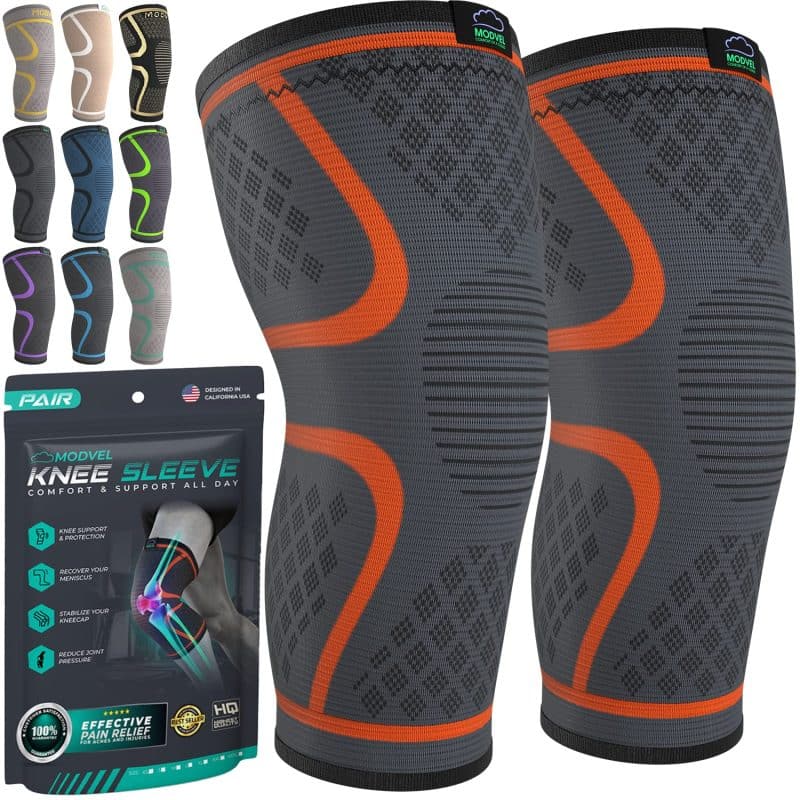
Wraparound knee braces are adjustable and can be wrapped around the knee to provide customizable support. They are suitable for individuals with moderate knee pain or instability. The wraparound design makes them easy to put on and take off, and they can be adjusted for a snug fit.
Pros:
- Adjustable fit for personalized support.
- Easy to wear and remove.
- Provides moderate support and stability.
Cons:
- May not provide as much support as hinged braces.
- Can be less comfortable than knee sleeves.
Strap Knee Braces
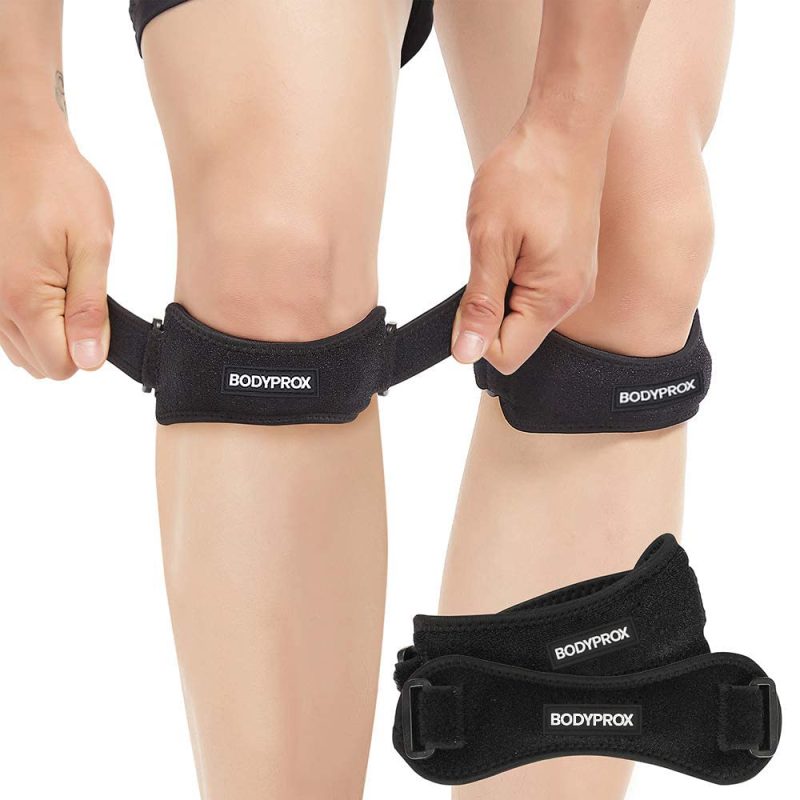
Strap knee braces consist of one or more straps that wrap around the knee, providing targeted support to specific areas. They are often used for conditions like patellar tendinitis or runner’s knee, where support is needed for the patellar tendon.
Pros:
- Provides targeted support to specific areas.
- Lightweight and unobtrusive.
- Suitable for mild to moderate knee pain.
Cons:
- Limited support compared to full braces.
- May not be suitable for severe knee conditions.
Knee Pads
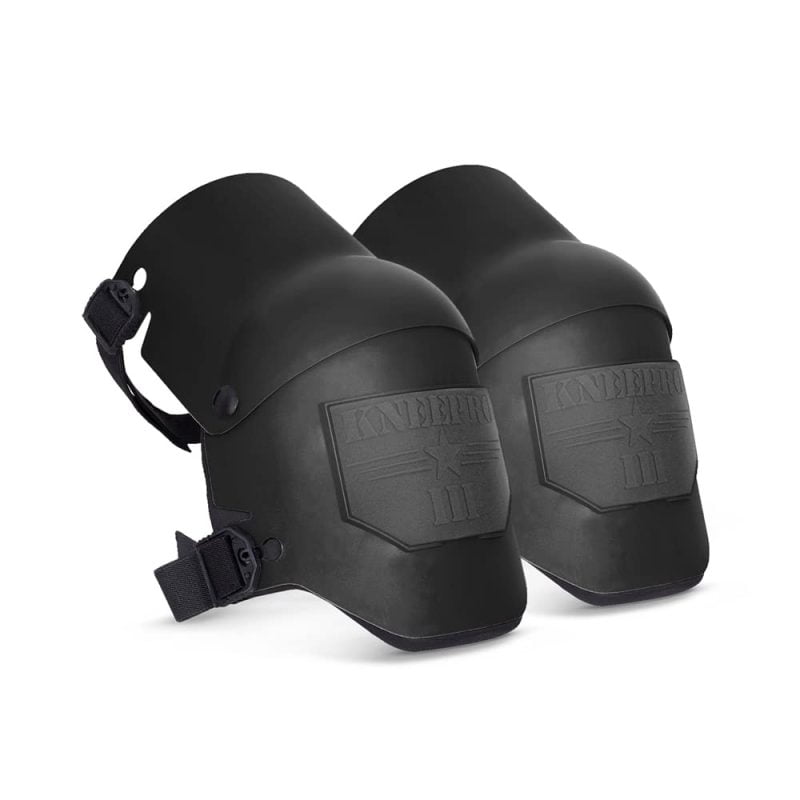
Knee pads are often used by individuals who need protection from impact or kneeling, such as athletes or workers in certain industries. They provide cushioning to the knee joint and can help prevent injuries from falls or impacts.
Pros:
- Provides cushioning and impact protection.
- Suitable for sports and certain occupations.
- Can be worn over or under clothing.
Cons:
- Provides little to no joint stability.
- Not suitable for individuals with existing knee conditions.
Benefits of Using Knee Support While Walking
Using knee support while walking offers several benefits, especially for those with knee pain or instability. Here are some of the key advantages:
Reducing Pain and Discomfort
One of the primary benefits of knee support is its ability to reduce pain and discomfort. By providing compression and stability, knee supports can help alleviate pain caused by conditions such as arthritis, tendinitis, and overuse injuries. This allows individuals to walk more comfortably and engage in daily activities without being hindered by knee pain.
Improving Mobility and Stability
Knee supports help improve mobility by stabilizing the knee joint and preventing unwanted movements that could cause pain or injury. This increased stability allows individuals to walk with more confidence and reduces the risk of falls or accidents.
Preventing Further Injury
For those recovering from a knee injury or surgery, knee supports can play a crucial role in preventing re-injury. By providing support to the weakened joint, knee braces help protect against excessive strain and allow for a safer and more gradual return to normal activity levels.
How to Choose the Best Knee Support for Walking
Choosing the right knee support is essential for maximizing its benefits. Here are some factors to consider when selecting the best knee support for walking:
Material and Comfort
The material of the knee support is important for both comfort and effectiveness. Look for breathable, moisture-wicking materials that will keep your skin dry and comfortable during extended wear. Neoprene is a popular material for knee supports due to its durability and flexibility.
Level of Support
Different knee supports offer varying levels of support. Consider the severity of your knee condition when choosing a brace. For mild pain or preventive measures, a knee sleeve may be sufficient. For more serious conditions, a hinged brace or wraparound brace may be necessary.
Size and Fit
Proper fit is crucial for the effectiveness of knee support. A brace that is too loose won’t provide adequate support, while one that is too tight may restrict blood flow and cause discomfort. Measure your knee according to the manufacturer’s guidelines to ensure you choose the correct size.
Ease of Use
Consider how easy the knee support is to put on and take off, especially if you plan to wear it daily. Wraparound braces and sleeves are generally easier to use than more complex hinged braces.
Top Knee Supports for Walking
Based on the factors mentioned above, here are some of the top knee supports for walking:
1. DonJoy Performance Bionic Knee Brace
The DonJoy Performance Bionic Knee Brace is a hinged brace that provides excellent support and stability. It’s designed for athletes and active individuals who need protection from ligament injuries.
2. McDavid Knee Support/Brace
The McDavid Knee Support/Brace is a wraparound brace that offers moderate support and compression. It’s ideal for individuals with mild to moderate knee pain or instability.
3. Bauerfeind Sports Knee Support
The Bauerfeind Sports Knee Support is a knee sleeve that provides compression and stability. It’s designed for athletes and those with mild knee pain.
4. Shock Doctor Ultra Knee Support
The Shock Doctor Ultra Knee Support is a hinged brace that offers maximum support and protection. It’s suitable for individuals recovering from knee surgery or those with severe knee conditions.
5. CopperJoint Copper Knee Sleeve
The CopperJoint Copper Knee Sleeve is a knee sleeve infused with copper. It’s designed to provide compression and reduce pain while promoting healing.
Detailed Review of Top Knee Supports
1. DonJoy Performance Bionic Knee Brace
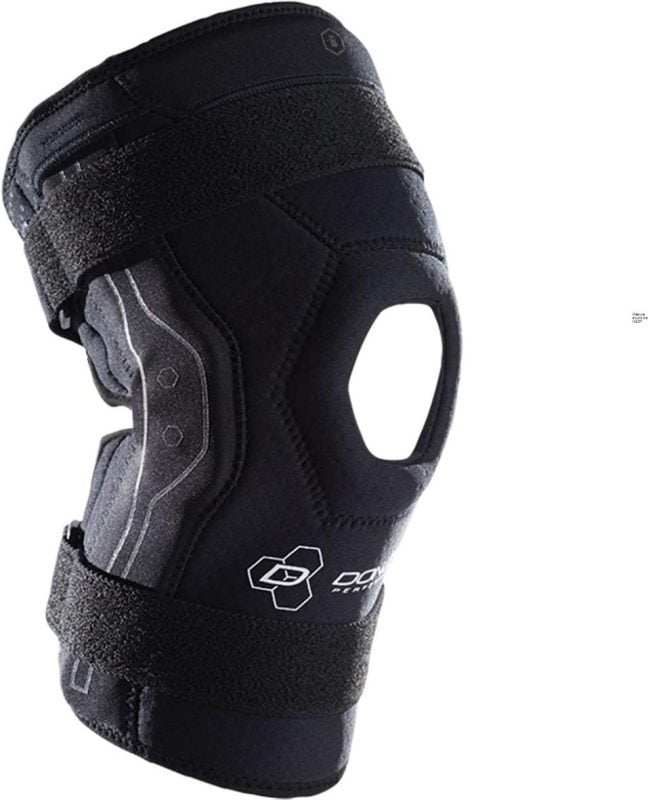
Key Features:
- Hinged design for maximum stability.
- Lightweight and breathable material.
- Adjustable straps for a secure fit.
Pros:
- Excellent support for ligament injuries.
- Comfortable for extended wear.
- Durable construction.
Cons:
- May be bulky for some users.
- Higher price point.
2. McDavid Knee Support/Brace

Key Features:
- Wraparound design for easy application.
- Moderate compression and support.
- Neoprene material for comfort.
Pros:
- Adjustable fit for personalized support.
- Suitable for daily use.
- Affordable price.
Cons:
- May not provide enough support for severe injuries.
- Limited range of motion compared to hinged braces.
3. Bauerfeind Sports Knee Support
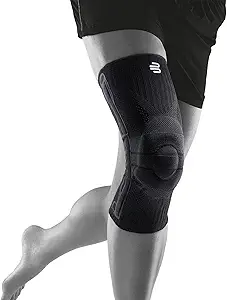
Key Features:
- Compression sleeve with targeted support.
- Lightweight and breathable fabric.
- Anatomical fit for comfort.
Pros:
- Ideal for sports and physical activities.
- Reduces pain and swelling.
- Easy to wear under clothing.
Cons:
- May not provide enough stability for severe conditions.
- Higher price compared to basic knee sleeves.
4. Shock Doctor Ultra Knee Support
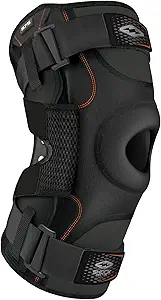
Key Features:
- Hinged design for maximum protection.
- Anti-microbial and moisture-wicking material.
- Adjustable straps for a customized fit.
Pros:
- Provides strong support for post-surgery recovery.
- Reduces risk of re-injury.
- Comfortable for extended use.
Cons:
- The bulkier design may not be suitable for all-day wear.
- Higher price point.
5. CopperJoint Copper Knee Sleeve
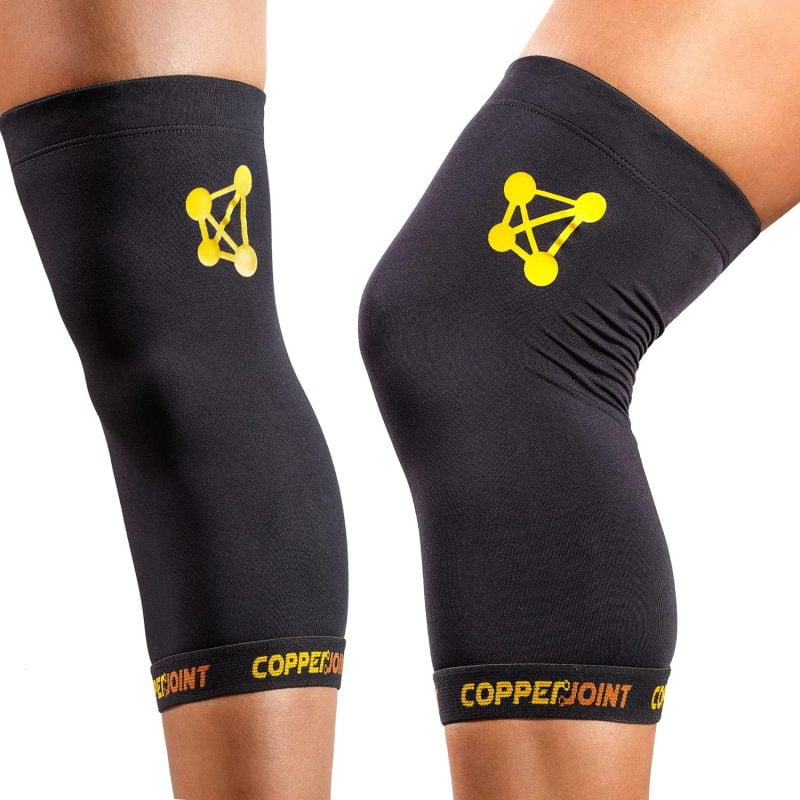
Key Features:
- Infused with copper for anti-inflammatory benefits.
- Compression fit for pain relief.
- Breathable and moisture-wicking material.
Pros:
- Promotes healing and reduces pain.
- Lightweight and comfortable.
- Affordable option.
Cons:
- Limited support for severe conditions.
- May lose elasticity over time.
How to Wear and Maintain Your Knee Support
Properly wearing and maintaining your knee support is essential for its effectiveness and longevity.
Properly Wearing Your Knee Brace
- Ensure Proper Fit: Follow the manufacturer’s sizing guidelines to choose the right size.
- Positioning: Make sure the brace is centered on your knee, with the hinges or straps aligned properly.
- Adjust for Comfort: Tighten the straps or adjust the fit to ensure the brace is snug but not too tight.
- Check Mobility: After putting on the brace, walk around to ensure it does not restrict your movement.
Cleaning and Care Tips
- Hand Wash When Possible: To extend the life of your knee support, hand wash it with mild soap and water.
- Air Dry: Avoid using a dryer, as high heat can damage the materials. Air dry your brace to maintain its elasticity.
- Regular Inspection: Check your knee support regularly for signs of wear and tear. Replace it if you notice any damage or reduced effectiveness.
When to Replace Your Knee Support
Over time, knee supports can lose their effectiveness due to wear and tear. Consider replacing your knee support if:
- The material has stretched and no longer provides adequate compression.
- The straps or closures are damaged or no longer function properly.
- The support feels less effective or comfortable than it used to be.
FAQs on Knee Supports for Walking
Can I Wear Knee Support All Day?
Yes, you can wear knee support all day, especially if you are experiencing pain or instability. However, it’s important to ensure that the brace is comfortable and not too tight. If you experience discomfort, remove the brace and consult a healthcare professional.
Will Knee Support Weaken My Muscles?
Wearing knee support occasionally or for specific activities will not weaken your muscles. However, relying on it constantly without strengthening exercises could lead to muscle weakness over time. It’s important to balance knee support with exercises that strengthen the muscles around the knee.
Can I Wear a Knee Brace on Both Knees?
Yes, you can wear knee braces on both knees if needed. Some individuals with bilateral knee pain or instability find relief by wearing supports on both knees.
How Tight Should My Knee Support Be?
Your knee support should be snug enough to provide compression and stability, but not so tight that it restricts blood flow or causes discomfort. If you experience numbness, tingling, or increased pain, loosen the brace or remove it.
Are Knee Supports Effective for Arthritis?
Yes, knee supports can be effective for managing the pain and discomfort associated with arthritis. They provide compression and stability, which can help reduce pain, improve mobility, and prevent further joint damage.
Conclusion
Knee support is a valuable tool for individuals experiencing knee pain, instability, or recovering from an injury. Whether you’re an athlete, elderly, or simply someone who enjoys walking, the right knee support can make a significant difference in your comfort and mobility.
When choosing knee support, consider factors such as material, level of support, size, and ease of use. With the right support, you can confidently walk, reduce pain, and protect your knees from further injury.
Remember, knee support is just one part of maintaining healthy knees. Incorporate strengthening exercises, proper footwear, and a healthy lifestyle to keep your knees in the best possible condition.
Choosing the best knee support for walking doesn’t have to be overwhelming. With the information provided in this guide, you’re well-equipped to make an informed decision and find the knee support that best suits your needs.


